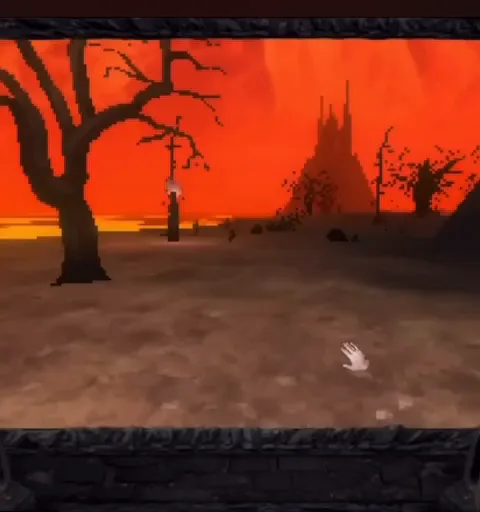Libya, officially the State of Libya, is a country in the Maghreb region of North Africa. Libya borders the Mediterranean Sea to the north, Egypt to the east, Sudan to the southeast, Chad to the south, Niger to the southwest, Algeria to the west, and Tunisia to the northwest, as well as maritime borders with Greece, Italy and Malta to the north. Libya comprises three historical regions: Tripolitania, Fezzan, and Cyrenaica. With an area of almost 1.8 million km2 (700,000 sq mi), it is the fourth-largest country in Africa and the Arab world, and the 16th-largest in the world.[11] Libya claims 32,000 square kilometers of southeastern Algeria, south of the Libyan town of Ghat.[12][13] The country's official religion is Islam, with 96.6% of the Libyan population being Sunni Muslims.[14] The official language of Libya is Arabic, with vernacular Libyan Arabic being spoken most widely. The majority of Libya's population is Arab.[15] The largest city and capital, Tripoli, is located in northwestern Libya and contains over a million of Libya's seven million people.[16]
Libya has been inhabited by Berbers since the late Bronze Age as descendants from Iberomaurusian and Capsian cultures. In classical antiquity, the Phoenicians established city-states and trading posts in western Libya, while several Greek cities were established in the East. Parts of Libya were variously ruled by Carthaginians, Numidians, Persians, and Greeks before the entire region becoming a part of the Roman Empire. Libya was an early center of Christianity. After the fall of the Western Roman Empire, the area of Libya was mostly occupied by the Vandals until the 7th century when invasions brought Islam to the region. From then on, centuries of Arab migration to the Maghreb shifted the demographic scope of Libya in favor of Arabs. In the 16th century, the Spanish Empire and the Knights of St John occupied Tripoli until Ottoman rule began in 1551. Libya was involved in the Barbary Wars of the 18th and 19th centuries. Ottoman rule continued until the Italo-Turkish War, which resulted in the Italian occupation of Libya and the establishment of two colonies, Italian Tripolitania and Italian Cyrenaica (1911–1934), later unified in the Italian Libya colony from 1934 to 1943.
During the Second World War, Libya was an area of warfare in the North African Campaign. The Italian population then went into decline. Libya became independent as a kingdom in 1951. A bloodless military coup in 1969, initiated by a coalition led by Colonel Muammar Gaddafi, overthrew King Idris I and created a republic.[18] Gaddafi was often described by critics as a dictator, and was one of the world's longest serving non-royal leaders, ruling for 42 years.[19] He ruled until being overthrown and killed during the 2011 Libyan Civil War, which was part of the wider Arab Spring, with authority transferred to the National Transitional Council then to the elected General National Congress. By 2014, two rival authorities claimed to govern Libya,[20][21][22] which led to a second civil war, with parts of Libya split between the Tobruk and Tripoli-based governments as well as various tribal and Islamist militias.[23] The two main warring sides signed a permanent ceasefire in 2020, and a unity government took authority to plan for democratic elections, though political rivalries continue to delay this.[24] Libya is a developing country ranking 92nd by HDI,[6] the highest score in mainland Africa, and has the 10th-largest proven oil reserves in the world.[25] Libya is a member of the United Nations, the Non-Aligned Movement, the African Union, the Arab League, the OIC and OPEC.
Etymology
The origin of the name "Libya" first appeared in an inscription of Ramesses II, written as rbw in hieroglyphic. The name derives from a generalized identity given to a large confederacy of ancient east "Libyan" berbers, North African people(s) and tribes who lived around the lush regions of Cyrenaica and Marmarica. An army of 40,000 men[26] and a confederacy of tribes known as "Great Chiefs of the Libu" were led by King Meryey who fought a war against pharaoh Merneptah in year 5 (1208 BCE). This conflict was mentioned in the Great Karnak Inscription in the western delta during the 5th and 6th years of his reign and resulted in a defeat for Meryey. According to the Great Karnak Inscription, the military alliance comprised the Meshwesh, the Lukka, and the "Sea Peoples" known as the Ekwesh, Teresh, Shekelesh, and the Sherden.
The Great karnak inscription reads:
"... the third season, saying: 'The wretched, fallen chief of Libya, Meryey, son of Ded, has fallen upon the country of Tehenu with his bowmen — Sherden, Shekelesh, Ekwesh, Lukka, Teresh. Taking the best of every warrior and every man of war of his country. He has brought his wife and his children — leaders of the camp, and he has reached the western boundary in the fields of Perire."
The name "Libya" was brought back into use in 1903 by Italian geographer Federico Minutilli. It was intended to supplant terms applied to Ottoman Tripolitania, the coastal region of what is today Libya, having been ruled by the Ottoman Empire from 1551 to 1911 as the Eyalet of Tripolitania.
Libya gained independence in 1951 as the United Libyan Kingdom (المملكة الليبية المتحدة al-Mamlakah al-Lībiyyah al-Muttaḥidah), changing its name to the Kingdom of Libya (المملكة الليبية al-Mamlakah al-Lībiyyah), literally "Libyan Kingdom", in 1963. Following a coup d'état led by Muammar Gaddafi in 1969, the name of the state was changed to the Libyan Arab Republic (الجمهورية العربية الليبية al-Jumhūriyyah al-'Arabiyyah al-Lībiyyah). The official name was "Socialist People's Libyan Arab Jamahiriya" from 1977 to 1986 (الجماهيرية العربية الليبية الشعبية الاشتراكية), and "Great Socialist People's Libyan Arab Jamahiriya" (الجماهيرية العربية الليبية الشعبية الاشتراكية العظمى, al-Jamāhīriyyah al-'Arabiyyah al-Lībiyyah ash-Sha'biyyah al-Ishtirākiyyah al-'Udmá listenⓘ) from 1986 to 2011.
The National Transitional Council, established in 2011, referred to the state as simply "Libya". The UN formally recognized the country as "Libya" in September 2011 based on a request from the Permanent Mission of Libya citing the Libyan interim Constitutional Declaration of 3 August 2011. In November 2011, the ISO 3166-1 was altered to reflect the new country name "Libya" in English, "Libye (la)" in French.
In December 2017 the Permanent Mission of Libya to the United Nations informed the United Nations that the country's official name was henceforth the "State of Libya"; "Libya" remained the official short form, and the country continued to be listed under "L" in alphabetical lists.
History
Ancient Libya
The coastal plain of Libya was inhabited by Neolithic peoples from as early as 8000 BC. The Afroasiatic ancestors of the Berber people are assumed to have spread into the area by the Late Bronze Age. The earliest known name of such a tribe was the Garamantes, based in Germa. The Phoenicians were the first to establish trading posts in Libya.[34] By the 5th century BC, the greatest of the Phoenician colonies, Carthage, had extended its hegemony across much of North Africa, where a distinctive civilization, known as Punic, came into being.
In 630 BC, the ancient Greeks colonized the area around Barca in Eastern Libya and founded the city of Cyrene.[35] Within 200 years, four more important Greek cities were established in the area that became known as Cyrenaica.[36] The area was home to the renowned philosophy school of the Cyrenaics. In 525 BC the Persian army of Cambyses II overran Cyrenaica, which for the next two centuries remained under Persian or Egyptian rule. Alexander the Great ended Persian rule in 331 BC and received tribute from Cyrenaica. Eastern Libya again fell under the control of the Greeks, this time as part of the Ptolemaic Kingdom.
After the fall of Carthage the Romans did not immediately occupy Tripolitania (the region around Tripoli), but left it instead under control of the kings of Numidia, until the coastal cities asked and obtained its protection.[37] Ptolemy Apion, the last Greek ruler, bequeathed Cyrenaica to Rome, which formally annexed the region in 74 BC and joined it to Crete as a Roman province. As part of the Africa Nova province, Tripolitania was prosperous,[37] and reached a golden age in the 2nd and 3rd centuries, when the city of Leptis Magna, home to the Severan dynasty, was at its height.[37]
On the Eastern side, Cyrenaica's first Christian communities were established by the time of the Emperor Claudius.[38] It was heavily devastated during the Kitos War[39] and almost depopulated of Greeks and Jews alike.[40] Although repopulated by Trajan with military colonies,[39] from then started its decline.[38] Libya was early to convert to Nicene Christianity and was the home of Pope Victor I; however, Libya was also home to many non-Nicene varieties of early Christianity, such as Arianism and Donatism.
Islamic Libya
Main article: Islamic Tripolitania and Cyrenaica
The Atiq Mosque in Awjila is the oldest mosque in the Sahara.
Under the command of Amr ibn al-As, the Rashidun army conquered Cyrenaica.[41] In 647 an army led by Abdullah ibn Saad took Tripoli from the Byzantines definitively.[41] The Fezzan was conquered by Uqba ibn Nafi in 663. The Berber tribes of the hinterland accepted Islam, however they resisted Arab political rule.[42]
For the next several decades, Libya was under the purview of the Umayyad Caliph of Damascus until the Abbasids overthrew the Umayyads in 750, and Libya came under the rule of Baghdad. When Caliph Harun al-Rashid appointed Ibrahim ibn al-Aghlab as his governor of Ifriqiya in 800, Libya enjoyed considerable local autonomy under the Aghlabid dynasty. By the 10th century, the Shiite Fatimids controlled Western Libya, and ruled the entire region in 972 and appointed Bologhine ibn Ziri as governor.[37]
Ibn Ziri's Berber Zirid dynasty ultimately broke away from the Shiite Fatimids, and recognised the Sunni Abbasids of Baghdad as rightful Caliphs. In retaliation, the Fatimids brought about the migration of thousands from mainly two Arab Qaisi tribes, the Banu Sulaym and Banu Hilal to North Africa. This act drastically altered the fabric of the Libyan countryside, and cemented the cultural and linguistic Arabisation of the region.
Zirid rule in Tripolitania was short-lived though, and already in 1001 the Berbers of the Banu Khazrun broke away. Tripolitania remained under their control until 1146, when the region was overtaken by the Normans of Sicily.[43] For the next 50 years, Tripolitania was the scene of numerous battles among Ayyubids, the Almohad rulers and insurgents of the Banu Ghaniya. Later, a general of the Almohads, Muhammad ibn Abu Hafs, ruled Libya from 1207 to 1221 before the later establishment of a Tunisian Hafsid dynasty[43] independent from the Almohads. The Hafsids ruled Tripolitania for nearly 300 years. By the 16th century the Hafsids became increasingly caught up in the power struggle between Spain and the Ottoman Empire.
After weakening control of Abbasids, Cyrenaica was under Egypt based states such as Tulunids, Ikhshidids, Ayyubids and Mamluks before Ottoman conquest in 1517. Finally Fezzan acquired independence under Awlad Muhammad dynasty after Kanem rule. Ottomans finally conquered Fezzan between 1556 and 1577.
Ottoman Tripolitania
Main article: Ottoman Tripolitania
The siege of Tripoli in 1551 allowed the Ottomans to capture the city from the Knights of St. John.
After a successful invasion of Tripoli by Habsburg Spain in 1510,[43] and its handover to the Knights of St. John, the Ottoman admiral Sinan Pasha took control of Libya in 1551.[43] His successor Turgut Reis was named the Bey of Tripoli and later Pasha of Tripoli in 1556. By 1565, administrative authority as regent in Tripoli was vested in a pasha appointed directly by the sultan in Constantinople/Istanbul. In the 1580s, the rulers of Fezzan gave their allegiance to the sultan, and although Ottoman authority was absent in Cyrenaica, a bey was stationed in Benghazi late in the next century to act as agent of the government in Tripoli.[38] European slaves and large numbers of enslaved Blacks transported from Sudan were also a feature of everyday life in Tripoli. In 1551, Turgut Reis enslaved almost the entire population of the Maltese island of Gozo, some 5,000 people, sending them to Libya.[44][45]
In time, real power came to rest with the pasha's corps of janissaries.[43] In 1611 the deys staged a coup against the pasha, and Dey Sulayman Safar was appointed as head of government. For the next hundred years, a series of deys effectively ruled Tripolitania. The two most important Deys were Mehmed Saqizli (r. 1631–49) and Osman Saqizli (r. 1649–72), both also Pasha, who ruled effectively the region.[46] The latter conquered also Cyrenaica.[46]
The USS Enterprise of the Mediterranean Squadron capturing a Tripolitan Corsair during the First Barbary War, 1801
Lacking direction from the Ottoman government, Tripoli lapsed into a period of military anarchy during which coup followed coup and few deys survived in office more than a year. One such coup was led by Turkish officer Ahmed Karamanli.[46] The Karamanlis ruled from 1711 until 1835 mainly in Tripolitania, and had influence in Cyrenaica and Fezzan as well by the mid-18th century. Ahmed's successors proved to be less capable than himself, however, the region's delicate balance of power allowed the Karamanli. The 1793–95 Tripolitanian civil war occurred in those years. In 1793, Turkish officer Ali Pasha deposed Hamet Karamanli and briefly restored Tripolitania to Ottoman rule. Hamet's brother Yusuf (r. 1795–1832) re-established Tripolitania's independence.
A US Navy expedition under Commodore Edward Preble engaging gunboats and fortifications in Tripoli, 1804
In the early 19th century war broke out between the United States and Tripolitania, and a series of battles ensued in what came to be known as the First Barbary War and the Second Barbary War. By 1819, the various treaties of the Napoleonic Wars had forced the Barbary states to give up piracy almost entirely, and Tripolitania's economy began to crumble. As Yusuf weakened, factions sprung up around his three sons. Civil war soon resulted.[47]
Ottoman Sultan Mahmud II sent in troops ostensibly to restore order, marking the end of both the Karamanli dynasty and an independent Tripolitania.[47] Order was not recovered easily, and the revolt of the Libyan under Abd-El-Gelil and Gûma ben Khalifa lasted until the death of the latter in 1858.[47] The second period of direct Ottoman rule saw administrative changes, and greater order in the governance of the three provinces of Libya. Ottoman rule finally reasserted to Fezzan between 1850 and 1875 for earning income from Saharan commerce.
Italian colonization and Allied occupation
[edit]
Main articles: Italian Tripolitania, Italian Cyrenaica, and Italian Libya
See also: Italian colonization of Libya
Omar Mukhtar was a prominent leader of Libyan resistance in Cyrenaica against Italian colonization.
After the Italo-Turkish War (1911–1912), Italy simultaneously turned the three regions into colonies.[48] From 1912 to 1927, the territory of Libya was known as Italian North Africa. From 1927 to 1934, the territory was split into two colonies, Italian Cyrenaica and Italian Tripolitania, run by Italian governors. Some 150,000 Italians settled in Libya, constituting roughly 20% of the total population.[49]
Omar Mukhtar rose to prominence as a resistance leader against Italian colonization and became a national hero despite his capture and execution on 16 September 1931.[50] His face is currently printed on the Libyan ten dinar note in memory and recognition of his patriotism. Another prominent resistance leader, Idris al-Mahdi as-Senussi (later King Idris I), Emir of Cyrenaica, continued to lead the Libyan resistance until the outbreak of the Second World War.
The so-called "pacification of Libya" by the Italians resulted in mass deaths of the indigenous people in Cyrenaica, killing approximately one quarter of Cyrenaica's population of 225,000.[51] Ilan Pappé estimates that between 1928 and 1932 the Italian military "killed half the Bedouin population (directly or through disease and starvation in Italian concentration camps in Libya)."[52]
Italian propaganda postcard depicting the Italian invasion of Libya in 1911
In 1934, Italy combined Cyrenaica, Tripolitania and Fezzan and adopted the name "Libya" (used by the Ancient Greeks for all of North Africa except Egypt) for the unified colony, with Tripoli as its capital.[53] The Italians emphasized infrastructure improvements and public works. In particular, they greatly expanded Libyan railway and road networks from 1934 to 1940, building hundreds of kilometers of new roads and railways and encouraging the establishment of new industries and dozens of new agricultural villages.
In June 1940, Italy entered World War II. Libya became the setting for the hard-fought North African Campaign that ultimately ended in defeat for Italy and its German ally in 1943.
From 1943 to 1951, Libya was under Allied occupation. The British military administered the two former Italian Libyan provinces of Tripolitana and Cyrenaïca, while the French administered the province of Fezzan. In 1944, Idris returned from exile in Cairo but declined to resume permanent residence in Cyrenaica until the removal of some aspects of foreign control in 1947. Under the terms of the 1947 peace treaty with the Allies, Italy relinquished all claims to Libya.[54]
Independence and Kingdom of Libya
[edit]
Main article: Kingdom of Libya
King Idris of Libya
A national assembly crafted a constitution that established a monarchy and extended an offer for the throne to Sayyid Idris, the Emir of Cyrenaica.[55] Sayyid Idris held the esteemed position as the leader of the influential Senussi religious brotherhood, which was founded by his grandfather in the preceding century as a response to Western influence in the Arab world.[55] This devout Islamic movement garnered significant support from the desert Bedouin and became a major political force in Libya. During the declining years of the Ottoman Empire, it effectively governed the Libyan interior.[55] Born in an oasis in Cyrenaica in 1890, Sayyid Idris assumed leadership of the Senussi at a young age. He spent a considerable period of exile in Egypt under Italian rule and returned to Libya after the Axis powers were ousted in 1943.[55] On December 24th, 1951, as King Idris I, he addressed the nation via radio from Benghazi.[55] On November 21, 1949, the UN General Assembly passed a resolution stating that Libya should become independent before January 1, 1952.[56] Idris represented Libya in the subsequent UN negotiations. By December 24, 1951, Libya declared its independence as the United Kingdom of Libya, a constitutional and hereditary monarchy under King Idris.[57]
However, the new kingdom faced challenging prospects.[55] It lacked significant industry and agricultural resources.[55] Its primary exports consisted of hides, wool, horses, and ostrich feathers.[55] Despite having one of the lowest income per capita figures globally, it also suffered from one of the highest illiteracy rates.[55] King Idris I, already in his sixties, had no direct heir to succeed him.[55] His cousin, whom he had married in 1932, reportedly experienced numerous miscarriages, and their son, born in 1953, tragically passed away shortly after birth.[55] Crown Prince Rida, Idris's brother, was the designated heir, but the royal family was riddled with incessant disputes.[55] King Idris's devout Muslim piety, which solidified his support among the Bedouin population, clashed with the modernizing and urban intellectual currents in Libya.[55] To address the rivalry between Cyrenaica and Tripolitania, Benghazi and Tripoli alternated as the capital every two years. The swift emergence of a large number of bureaucrats resulted in a costly royal government.[55]
The discovery of significant oil reserves in 1959 and the subsequent income from petroleum sales enabled one of the world's poorest nations to establish an extremely wealthy state.[57] Although oil drastically improved the Libyan government's finances, popular resentment began to build over the increased concentration of the nation's wealth in the hands of King Idris and the national elite.[56][57] This discontent continued to mount with the rise of Nasserism and Arab nationalism throughout North Africa and the Middle East.[57]
Libya under Muammar Gaddafi
[edit]
Main article: History of Libya under Muammar Gaddafi
On 1 September 1969, a group of rebel military officers led by Muammar Gaddafi launched a coup d'état against King Idris, which became known as the Al Fateh Revolution.[58] Gaddafi was referred to as the "Brother Leader and Guide of the Revolution" in government statements and the official Libyan press.[59] He began dominating history and politics of Libya for the next four decades. Moving to reduce Italian influence, in October 1970 all Italian-owned assets were expropriated and the 12,000-strong Italian community was expelled from Libya alongside the smaller community of Libyan Jews. The day became a national holiday known as "Vengeance Day".[60]
Muammar al-Gaddafi, leader of Libya (1969–2011)
Libya's increase in prosperity was accompanied by increased internal political repression, and political dissent was made illegal under Law 75 of 1973. Widespread surveillance of the population was carried out through Gaddafi's Revolutionary Committees.[61][62][63] Gaddafi also wanted to ease the strict social restrictions imposed on women by the previous regime, establishing the Revolutionary Women's Formation to encourage reform. In 1970, a law was introduced affirming equality of the sexes and wage parity. In 1971, Gaddafi sponsored the creation of a Libyan General Women's Federation. In 1972, a law was passed criminalizing the marriage of girls under the age of sixteen and making the woman's consent a necessary prerequisite for a marriage.[64]
On 25 October 1975, a coup attempt was launched by a group of 20 military officers, mostly from the city of Misrata.[65] This resulted in the arrest and executions of the coup plotters.[66] In March of 1977, Libya officially became the "Socialist People's Libyan Arab Jamahiriya". Gaddafi officially passed power to the General People's Committees and henceforth claimed to be no more than a symbolic figurehead.[67] The new jamahiriya (Arab for "republic") governance structure he established was officially referred to as "direct democracy".[68] Gaddafi, in his vision of democratic government and political philosophy, published The Green Book in 1975. His short book inscribed a representative mix of utopian socialism and Arab nationalism with a streak of Bedouin supremacy.
F-4J of VF-74 with Libyan MiG-23 over Gulf of Sidra in 1981
In February 1977, Libya started delivering military supplies to Goukouni Oueddei and the People's Armed Forces in Chad. The Chadian–Libyan War began in earnest when Libya's support of rebel forces in northern Chad escalated into an invasion. Later that same year, Libya and Egypt fought a four-day border war that came to be known as the Egyptian–Libyan War. Both nations agreed to a ceasefire under the mediation of the Algerian president Houari Boumédiène. Hundreds of Libyans lost their lives in the country's support for Idi Amin's Uganda in its war against Tanzania. Gaddafi financed various other groups from anti-nuclear movements to Australian trade unions. On 2 March 1977, Libya officially became Socialist People's Libyan Arab Jamahiriya.
Libya adopted its plain green national flag on 19 November 1977. The country had the only plain-coloured flag in the world until 2011, when Libya adopted its current flag.[citation needed] From 1977 onward, per capita income in the country rose to more than US$11,000, the fifth-highest in Africa, while the Human Development Index became the highest in Africa and greater than that of Saudi Arabia. This was achieved without borrowing any foreign loans, keeping Libya debt-free.[74] The Great Manmade River was also built to allow free access to fresh water across large parts of the country. In addition, financial support was provided for university scholarships and employment programs. Much of Libya's income from oil, which soared in the 1970s, was spent on arms purchases and on sponsoring dozens of paramilitaries and terrorist groups around the world.
An American airstrike led by then U.S president Ronald Reagan intended to kill Gaddafi failed in 1986. Libya was finally put under sanctions by the United Nations after the bombing of a commercial flight at Lockerbie in 1988 killed 270 people. In the 1990s, the government's rule was threatened by militant Islamism and an unsuccessfull attempt to assassinate Gaddafi. The government responded with repressive measures. Riots and Islamic activisim were crushed by Revolutionary Guard Corps. Neverthless, Cyrenaica between 1995 and 1998 was politically unstable, due to the tribal allegiances of the local troops.[83] In 2003, Gaddafi announced that all of his regime's weapons of mass destruction were disassembled, and that Libya was transitioning toward nuclear power.
First Libyan Civil War and the fall of Gaddafi
Ambassador Cretz Stands by Fist Crushing a U.S. Fighter Plane Sculpture which was captured after the fall of Tripoli
The first civil war came during the Arab Spring movements which overturned the rulers of Tunisia and Egypt. Libya first experienced protests against Gaddafi's regime on 15 February 2011, with a full-scale revolt beginning on 17 February.[84] Libya's authoritarian regime led by Muammar Gaddafi put up much more of a resistance compared to the regimes in Egypt and Tunisia. While overthrowing the regimes in Egypt and Tunisia was a relatively quick process, Gaddafi's campaign posed significant stalls on the uprising in Libya. The first announcement of a competing political authority appeared online and declared the Interim Transitional National Council as an alternative government. One of Gaddafi's senior advisors responded by posting a tweet, wherein he resigned, defected, and advised Gaddafi to flee. By 20 February, the unrest had spread to Tripoli. On 27 February 2011, the National Transitional Council was established to administer the areas of Libya under rebel control. On 10 March 2011, the United States and many other nations recognised the council headed by Mahmoud Jibril as acting prime minister and as the legitimate representative of the Libyan people and withdrawing the recognition of Gaddafi's regime.
A protest against the anti-Gaddafi supporters in Tripoli
Pro-Gaddafi forces were able to respond militarily to rebel pushes in Western Libya and launched a counterattack along the coast toward Benghazi, the de facto centre of the uprising. The town of Zawiya, 48 kilometres (30 mi) from Tripoli, was bombarded by air force planes and army tanks and seized by Jamahiriya troops, "exercising a level of brutality not yet seen in the conflict." Organizations of the United Nations, including United Nations Secretary General Ban Ki-moon and the United Nations Human Rights Council, condemned the crackdown as violating international law, with the latter body expelling Libya outright in an unprecedented action. On 17 March 2011 the UN Security Council passed Resolution 1973, with a 10–0 vote and five abstentions including Russia, China, India, Brazil and Germany. The resolution sanctioned the establishment of a no-fly zone and the use of "all means necessary" to protect civilians within Libya. On 19 March, the first act of NATO allies to secure the no-fly zone began by destroying Libyan air defenses when French military jets entered Libyan airspace on a reconnaissance mission heralding attacks on enemy targets.
In the weeks that followed, US American forces were in the forefront of NATO operations against Libya. More than 8,000 US personnel in warships and aircraft were deployed in the area. At least 3,000 targets were struck in 14,202 strike sorties, 716 of them in Tripoli and 492 in Brega. The US air offensive included flights of B-2 Stealth bombers, each bomber armed with sixteen 2000-pound bombs, flying out of and returning to their base in Missouri in the continental United States. The support provided by the NATO air forces contributed to the ultimate success of the revolution. By 22 August 2011, rebel fighters had entered Tripoli and occupied Green Square,[100] which they renamed Martyrs' Square in honour of those killed since 17 February 2011. On 20 October 2011, the last heavy fighting of the uprising came to an end in the city of Sirte. The Battle of Sirte was both the last decisive battle and the last one in general of the First Libyan Civil War where Gaddafi was captured and killed by NATO-backed forces on 20 October 2011. Sirte was the last Gaddafi loyalist stronghold and his place of birth. The defeat of loyalist forces was celebrated on 23 October 2011, three days after the fall of Sirte. At least 30,000 Libyans died in the civil war. In addition, the National Transitional Council estimated 50,000 wounded.
Interwar period and the Second Libyan Civil War
Main articles: Aftermath of the First Libyan Civil War and Second Libyan Civil War
Areas of control in the Civil War, updated 11 June 2020:
Tobruk-led Government
Government of National Accord
Petroleum Facilities Guard
Tuareg tribes
Local forces
Following the defeat of loyalist forces, Libya was torn among numerous rival, armed militias affiliated with distinct regions, cities and tribes, while the central government had been weak and unable to effectively exert its authority over the country. Competing militias pitted themselves against each other in a political struggle between Islamist politicians and their opponents. On 7 July 2012, Libyans held their first parliamentary elections since the end of the former regime. On 8 August, the National Transitional Council officially handed power over to the wholly-elected General National Congress, which was then tasked with the formation of an interim government and the drafting of a new Libyan Constitution to be approved in a general referendum. On 25 August 2012, in what Reuters reported as "the most blatant sectarian attack" since the end of the civil war, unnamed organized assailants bulldozed a Sufi mosque with graves in the center of the Libyan capital Tripoli. It was the second such razing of a Sufi site in two days. Numerous acts of vandalism and destruction of heritage were carried out by suspected Islamist militias, including the removal of the Nude Gazelle Statue and the destruction and desecration of World War II-era British grave sites near Benghazi. Many other cases of heritage vandalism were reported to be carried out by Islamist-related radical militias and mobs that either destroyed, robbed, or looted a number of historic sites.
Libya has emerged as a major transit point for people trying to reach Europe.
On 11 September 2012, Islamist militants mounted an attack on the American diplomatic compound in Benghazi, killing the U.S. ambassador to Libya, J. Christopher Stevens, and three others. The incident generated outrage in the United States and Libya.[109] On 7 October 2012, Libya's Prime Minister-elect Mustafa A.G. Abushagur was ousted after failing a second time to win parliamentary approval for a new cabinet. On 14 October 2012, the General National Congress elected former GNC member and human rights lawyer Ali Zeidan as prime minister-designate. Zeidan was sworn in after his cabinet was approved by the GNC. On 11 March 2014, after having been ousted by the GNC for his inability to halt a rogue oil shipment, Prime Minister Zeidan stepped down, and was replaced by Prime Minister Abdullah al-Thani.
The Second Civil War began in May 2014 following fighting between rival parliaments with tribal militias and jihadist groups soon taking advantage of the power vacuum. Most notably, radical Islamist fighters seized Derna in 2014 and Sirte in 2015 in the name of the Islamic State. In February 2015, neighbouring Egypt launched airstrikes against IS in support of the Tobruk government. In June 2014, elections were held to the House of Representatives, a new legislative body intended to take over from the General National Congress. The elections were marred by violence and low turnout, with voting stations closed in some areas. Secularists and liberals did well in the elections, to the consternation of Islamist lawmakers in the GNC, who reconvened and declared a continuing mandate for the GNC, refusing to recognise the new House of Representatives. Armed supporters of the General National Congress occupied Tripoli, forcing the newly elected parliament to flee to Tobruk.
Khalifa Haftar, the head of the Libyan National Army, one of the main factions in the 2014 civil war
In January 2015, meetings were held with the aim to find a peaceful agreement between the rival parties in Libya. The so-called Geneva-Ghadames talks were supposed to bring the GNC and the Tobruk government together at one table to find a solution of the internal conflict. However, the GNC actually never participated, a sign that internal division not only affected the "Tobruk Camp", but also the "Tripoli Camp". Meanwhile, terrorism within Libya steadily increased, also affecting neighbouring countries. The terrorist attack against the Bardo Museum in Tunisia on 18 March 2015 was reportedly carried out by two Libyan-trained militants. During 2015 an extended series of diplomatic meetings and peace negotiations were supported by the United Nations, as conducted by the Special Representative of the Secretary-General (SRSG), Spanish diplomat Bernardino León. UN support for the SRSG-led process of dialogue carried on in addition to the usual work of the United Nations Support Mission in Libya (UNSMIL). In July 2015 SRSG Leon reported to the UN Security Council on the progress of the negotiations, which at that point had just achieved a political agreement on 11 July setting out "a comprehensive framework... includ[ing] guiding principles... institutions and decision-making mechanisms to guide the transition until the adoption of a permanent constitution." The stated purpose of that process was "...intended to culminate in the creation of a modern, democratic state based on the principle of inclusion, the rule of law, separation of powers and respect for human rights." The SRSG praised the participants for achieving agreement, stating that "The Libyan people have unequivocally expressed themselves in favour of peace." The SRSG then informed the Security Council that "Libya is at a critical stage" and urging "all parties in Libya to continue to engage constructively in the dialogue process", stating that "only through dialogue and political compromise, can a peaceful resolution of the conflict be achieved. A peaceful transition will only succeed in Libya through a significant and coordinated effort in supporting a future Government of National Accord...". Talks, negotiations and dialogue continued on during mid-2015 at various international locations, culminating at Skhirat in Morocco in early September.
Also in 2015, as part of the ongoing support from the international community, the UN Human Rights Council requested a report about the Libyan situation and the High Commissioner for Human Rights, Zeid Ra'ad Al Hussein, established an investigative body (OIOL) to report on human rights and rebuilding the Libyan justice system. Chaos-ridden Libya emerged as a major transit point for people trying to reach Europe. Between 2013 and 2018, nearly 700,000 migrants reached Italy by boat, many of them from Libya. In May 2018 Libya's rival leaders agreed to hold parliamentary and presidential elections following a meeting in Paris.[136] In April 2019, Khalifa Haftar launched Operation Flood of Dignity, in an offensive by the Libyan National Army aimed to seize Western territories from the Government of National Accord (GNA). In June 2019, forces allied to Libya's UN-recognized Government of National Accord successfully captured Gharyan, a strategic town where military commander Khalifa Haftar and his fighters were based. According to a spokesman for GNA forces, Mustafa al-Mejii, dozens of LNA fighters under Haftar were killed, while at least 18 were taken prisoner.[138] In March 2020, UN-backed government of Fayez Al-Sarraj commenced Operation Peace Storm. The government initiated the bid in response to the state of assaults carried by Field Marshal Haftar's LNA. "We are a legitimate, civilian government that respects its obligations to the international community, but is committed primarily to its people and has an obligation to protect its citizens," Sarraj said in line with his decision.[139] On 28 August 2020, the BBC Africa Eye and BBC Arabic Documentaries revealed that a drone operated by the United Arab Emirates (UAE) killed 26 young cadets at a military academy in Tripoli, on 4 January. Most of the cadets were teenagers and none of them were armed. The Chinese-made drone Wing Loong II fired Blue Arrow 7 missile, which was operated from UAE-run Al-Khadim Libyan air base. In February, these drones stationed in Libya were moved to an air base near Siwa in the western Egyptian desert.[140] The Guardian probed and discovered the blatant violation of UN arms embargo by the UAE and Turkey on 7 October 2020. As per the reporting, both the nations sent large-scale military cargo planes to Libya in support of their respective parties. On 23 October 2020, a permanent ceasefire was signed to end the war.
Post-civil war years
Main article: Libyan Crisis (2011–present)
This section needs expansion. You can help by adding to it. (December 2021)
In December 2021, the country's first presidential election was scheduled, but was delayed to June 2022 and later postponed further.
Fathi Bashagha was appointed prime minister by the parliament in February 2022 to lead a transitional administration, but standing prime minister Abdul Hamid Dbeibeh refused to hand over power as of April 2022. In protest against the Dbeibah government, tribal leaders from the desert town of Ubari shut down the El Sharara oil field, Libya's largest oil field, on 18 April 2022. The shut down threatened to cause oil shortages domestically in Libya, and preclude the state-run National Oil Corp. from exploiting the high oil prices on the international market resulting from the Russian invasion of Ukraine.[144] On 2 July, the House of Representatives was burned down by protesters.[145]
On September 10, 2023, catastrophic floods due to dam failures generated by Storm Daniel devastated the port city of Derna, killing more than 4,000 and leaving over 10,000 missing. The floods were the worst natural disaster in Libya's modern history.
Geography
Main articles: Geography of Libya and Wildlife of Libya
A map of Libya
Libya map of Köppen climate classification
Libya extends over 1,759,540 square kilometres (679,362 sq mi), making it the 16th-largest nation in the world by size. Libya is bounded to the north by the Mediterranean Sea, the west by Tunisia and Algeria, the southwest by Niger, the south by Chad, the southeast by Sudan, and the east by Egypt. Libya lies between latitudes 19° and 34°N, and longitudes 9° and 26°E.
At 1,770 kilometres (1,100 mi), Libya's coastline is the longest of any African country bordering the Mediterranean. The portion of the Mediterranean Sea north of Libya is often called the Libyan Sea. The climate is mostly extremely dry and desertlike in nature. However, the northern regions enjoy a milder Mediterranean climate.
Six ecoregions lie within Libya's borders: Saharan halophytics, Mediterranean dry woodlands and steppe, Mediterranean woodlands and forests, North Saharan steppe and woodlands, Tibesti-Jebel Uweinat montane xeric woodlands, and West Saharan montane xeric woodlands.
Natural hazards come in the form of hot, dry, dust-laden sirocco (known in Libya as the gibli). This is a southern wind blowing from one to four days in spring and autumn. There are also dust storms and sandstorms. Oases can also be found scattered throughout Libya, the most important of which are Ghadames and Kufra. Libya is one of the sunniest and driest countries in the world due to prevailing presence of desert environment.[citation needed]
Libya was a pioneer state in North Africa in species protection, with the creation in 1975 of the El Kouf protected area. The fall of Muammar Gaddafi's regime favoured intense poaching: "Before the fall of Gaddafi even hunting rifles were forbidden. But since 2011, poaching has been carried out with weapons of war and sophisticated vehicles in which one can find up to 200 gazelle heads killed by militiamen who hunt to pass the time. We are also witnessing the emergence of hunters with no connection to the tribes that traditionally practice hunting. They shoot everything they find, even during the breeding season. More than 500,000 birds are killed in this way each year, when protected areas have been seized by tribal chiefs who have appropriated them. The animals that used to live there have all disappeared, hunted when they are edible or released when they are not," explains zoologist Khaled Ettaieb.
Libyan Desert
Libya is a predominantly desert country. Over 95% of the land area is covered in desert.
Libya is the fourth-most water-stressed country in the world.
The Libyan Desert, which covers most of Libya, is one of the most arid and sun-baked places on earth. In places, decades may pass without seeing any rainfall at all, and even in the highlands rainfall seldom happens, once every 5–10 years. At Uweinat, as of 2006 the last recorded rainfall was in September 1998.
Likewise, the temperature in the Libyan Desert can be extreme; on 13 September 1922, the town of 'Aziziya, which is located southwest of Tripoli, recorded an air temperature of 58 °C (136.4 °F), considered to be a world record. In September 2012, however, the world record figure of 58 °C was determined to be invalid by the World Meteorological Organization.
There are a few scattered uninhabited small oases, usually linked to the major depressions, where water can be found by digging to a few feet in depth. In the west there is a widely dispersed group of oases in unconnected shallow depressions, the Kufra group, consisting of Tazerbo, Rebianae and Kufra. Aside from the scarps, the general flatness is only interrupted by a series of plateaus and massifs near the centre of the Libyan Desert, around the convergence of the Egyptian-Sudanese-Libyan borders.
Slightly further to the south are the massifs of Arkenu, Uweinat, and Kissu. These granite mountains are ancient, having formed long before the sandstones surrounding them. Arkenu and Western Uweinat are ring complexes very similar to those in the Aïr Mountains. Eastern Uweinat (the highest point in the Libyan Desert) is a raised sandstone plateau adjacent to the granite part further west.
The plain to the north of Uweinat is dotted with eroded volcanic features. With the discovery of oil in the 1950s also came the discovery of a massive aquifer underneath much of Libya. The water in the Nubian Sandstone Aquifer System pre-dates the last Ice ages and the Sahara Desert itself. This area also contains the Arkenu structures, which were once thought to be two impact craters.




















4 comments